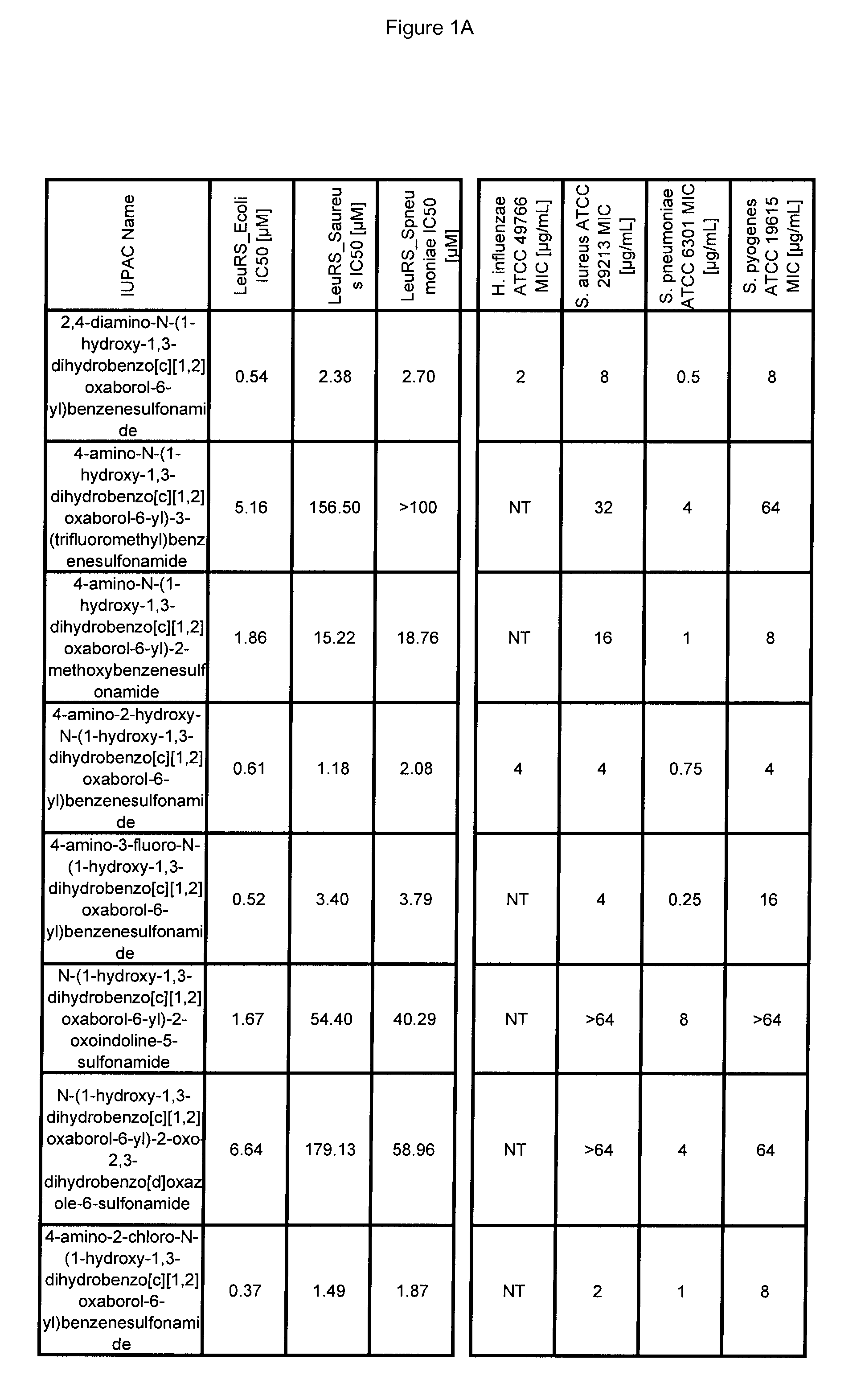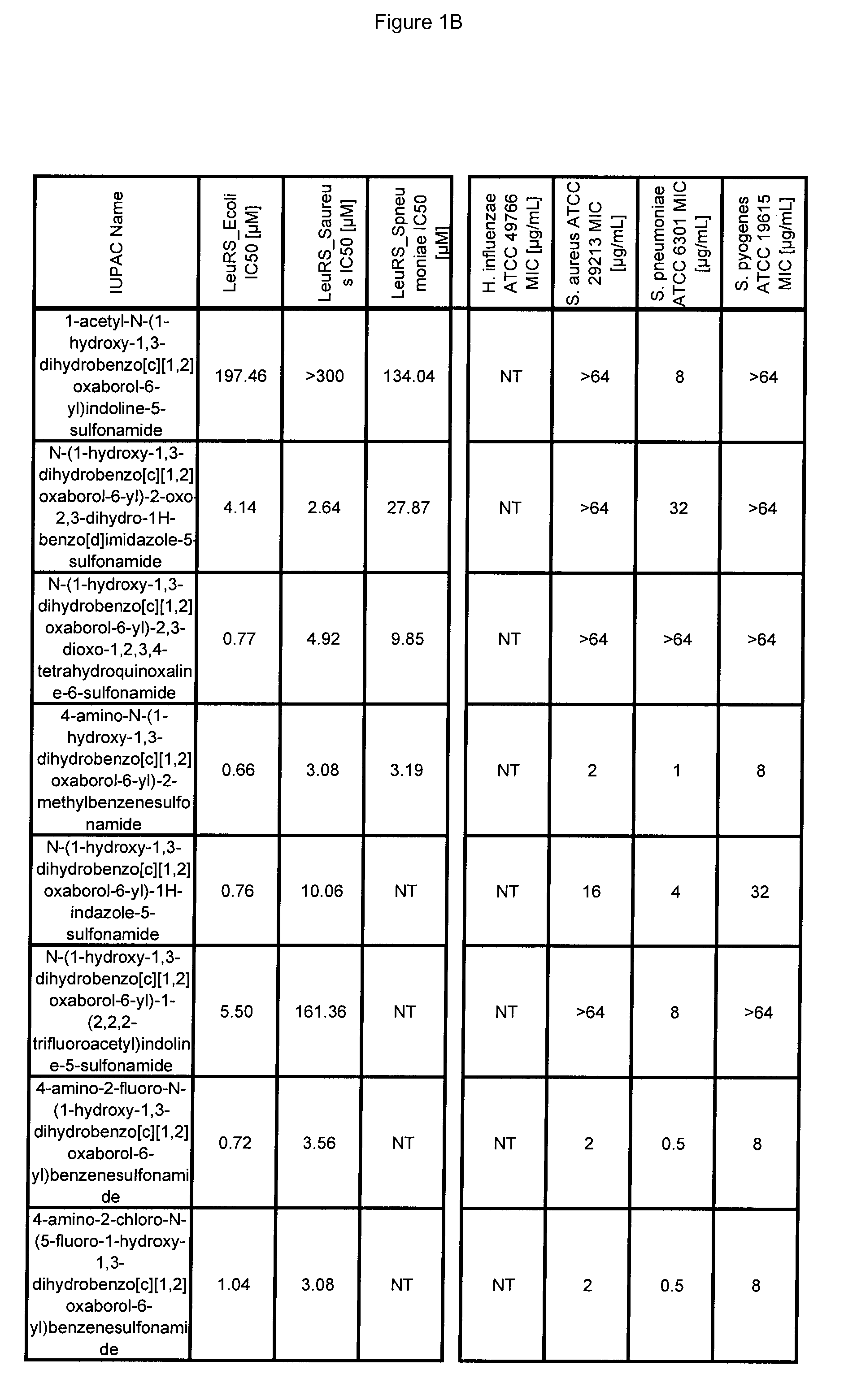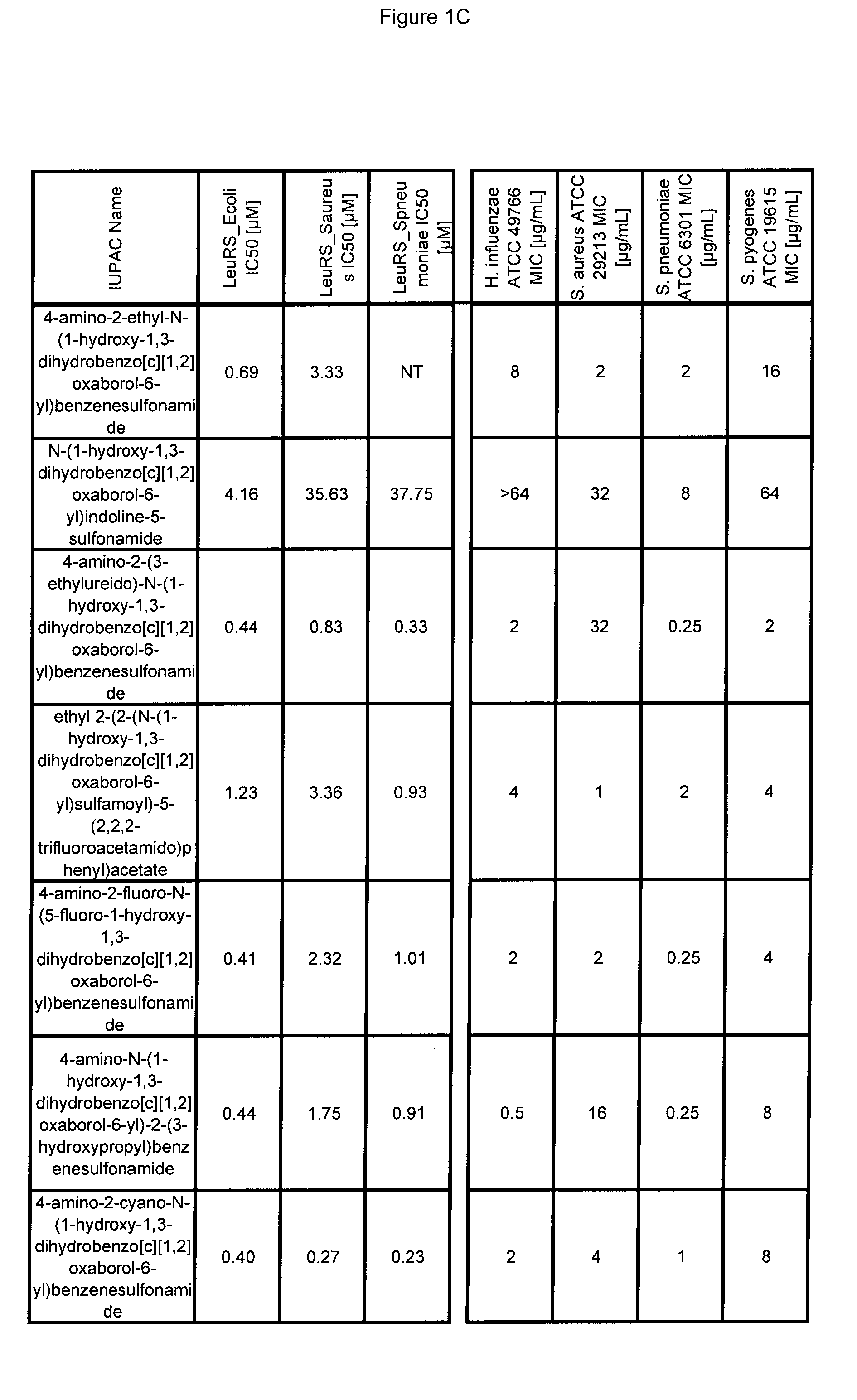Boron-containing small molecules
a small molecule and boron technology, applied in the direction of biocide, group 3/13 element organic compounds, antibacterial agents, etc., can solve the problems of global rise of bacteria and other microorganisms resistant to antibiotics and antimicrobials in general, and pose a major threat, and achieve the effect of killing or inhibiting the growth of bacteria
- Summary
- Abstract
- Description
- Claims
- Application Information
AI Technical Summary
Benefits of technology
Problems solved by technology
Method used
Image
Examples
example 1
4-Amino-N-(1-hydroxy-1,3-dihydro-benzo[c][1,2]oxaborol-6-yl)-3-trifluoromethyl-benzenesulfonamide
[0274]
N-(1-Hydroxy-1,3-dihydro-benzo[c][1,2]oxaborol-6-yl)-4-nitro-3-trifluoromethyl-benzenesulfonamide
[0275]General Procedure 1: 6-amino-3H-benzo[c][1,2]oxaborol-1-ol (250 mg, 1.7 mmol), 4-nitro-3-(trifluoromethyl)benzenesulfonyl chloride (578 mg, 2.0 mmol), Si-pyridine (4.7 g, 6.8 mmol), and MeCN (20 mL) at rt O / N. Si-amine (1.0 g, 1.79 mmol) was added and the mixture stirred at rt for 1.5 h. The mixture was filtered through a pad of celite and the filtrate was concentrated in vacuo at 40° C. The residue was recrystallization from MeCN / H2O to give a white solid (410 mg). Purification by prep HPLC, followed by lyophilization gave the title compound as a white solid: yield; 284 mg (42%). 1H NMR (400 MHz, DMSO-d6) δ (ppm): 10.65 (s, 1H), 9.26 (s, 1H), 8.34-8.33 (m, 1H), 8.21-8.18 (m, 2H), 7.51-7.50 (m, 1H), 7.35-7.33 (m, 1H), 7.20-7.17 (m, 1H), 4.91 (s, 2H); 19F NMR (376 MHz, DMSO-d6) δ (...
example 2
LeuRS IC50 Testing
[0666]Experiments were performed in 96-well microtiter plates, using 80 μL reaction mixtures containing 50 mM HEPES-KOH (pH 8.0), 30 mM MgCl2 and 30 mM KCl, 13 μM [14C]leucine (306 mCi / mmol, Perkin-Elmer), 15 uM total E. coli tRNA (Roche, Switzerland), 0.02% (w / v) BSA, 1 mM DTT, 0.2 pM LeuRs and 4 mM ATP at 30° C. Reactions were started by the addition of 4 mM ATP. After 7 minutes, reactions were quenched and tRNA was precipitated by the addition of 50 μL of 10% (w / v) TCA and transferred to 96-well nitrocellulose membrane filter plates (Millipore Multiscreen HTS, MSHAN4B50). Each well was then washed three times with 100 μL of 5% TCA. Filter plates were then dried under a heat lamp and the precipitated [14C]leucine tRNALeu were quantified by liquid scintillation counting using a Wallac MicroBeta Trilux model 1450 liquid scintillation counter (PerkinElmer, Waltham Mass.).
[0667]To determine the inhibitor concentration which reduces enzyme activity by 50% (IC50), incr...
example 3
Antibacterial MIC Testing
[0669]All MIC testing of bacteria followed the Clinical and Laboratory Standards Institute (CLSI) guidelines for antimicrobial testing of aerobic bacteria (Methods for Dilution Antimicrobial Susceptibility Tests for Bacteria That Grow Aerobically; Approved Standard—Seventh Edition)(M07-A7) and anaerobic bacteria (Methods for Antimicrobial Susceptibility Testing of Anaerobic Bacteria; Approved Standard—Seventh Edition) (M11-A7).
[0670]Antibacterial MIC testing results for exemplary compounds of the invention are provided in FIG. 1.
PUM
 Login to View More
Login to View More Abstract
Description
Claims
Application Information
 Login to View More
Login to View More - Generate Ideas
- Intellectual Property
- Life Sciences
- Materials
- Tech Scout
- Unparalleled Data Quality
- Higher Quality Content
- 60% Fewer Hallucinations
Browse by: Latest US Patents, China's latest patents, Technical Efficacy Thesaurus, Application Domain, Technology Topic, Popular Technical Reports.
© 2025 PatSnap. All rights reserved.Legal|Privacy policy|Modern Slavery Act Transparency Statement|Sitemap|About US| Contact US: help@patsnap.com



